Are you struggling to keep up during long tennis matches need? Do you find yourself gasping for air and feeling your legs turn to jelly as the game goes on? Many tennis players face this common problem, and it can be incredibly frustrating.
Imagine being in the middle of an intense rally, your opponent sending you from one corner of the court to the other. Your heart is racing, your muscles are burning, and you’re barely able to reach the ball. As the match continues, you feel your performance slipping away, all because you can’t keep up with the demands of the game.
But don’t worry! There’s a solution to boost your tennis endurance and take your game to the next level: cardio workouts. By incorporating the right cardio exercises into your training routine, you can dramatically improve your stamina on the court. You’ll be able to play longer, move faster, and maintain your focus throughout even the toughest matches.
In this blog post, we’ll explore various cardio workouts designed specifically to improve tennis endurance. From running and sprinting to footwork drills and jump rope exercises, we’ll cover everything you need to know to build the stamina required for peak performance on the tennis court.
Table of Contents
Why Cardio Matters for Tennis Players
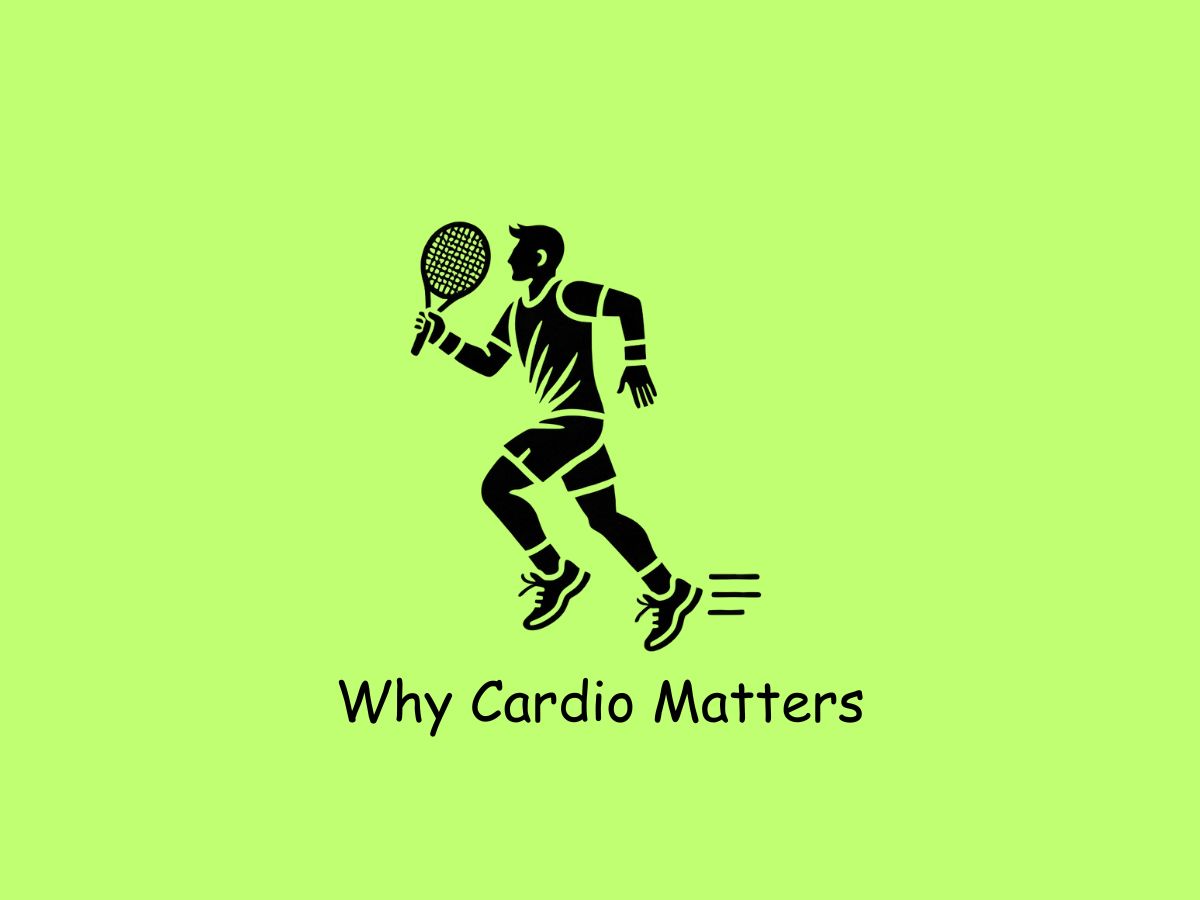
Tennis is a demanding sport that requires both physical and mental stamina. Cardio fitness plays a crucial role in a player’s performance on the court. When you have good cardio endurance, you can maintain high energy levels throughout long matches, even in intense rallies. This means you’ll be able to chase down more balls, hit harder shots, and stay focused for longer periods14.
Cardio training helps improve your heart health and blood circulation. This is important because tennis involves quick bursts of energy followed by short rest periods. A strong cardiovascular system allows your body to recover faster between points and games1. It also helps lower your risk of heart disease and improves your overall health1.
Moreover, cardio workouts can enhance your on-court agility and footwork. Many cardio exercises, like running and jumping rope, help develop the quick movements and changes of direction that are essential in tennis4. By improving your cardio fitness, you’ll find yourself moving more efficiently on the court, reaching balls faster, and maintaining better positioning during rallies.
Running: The Foundation of Tennis Fitness
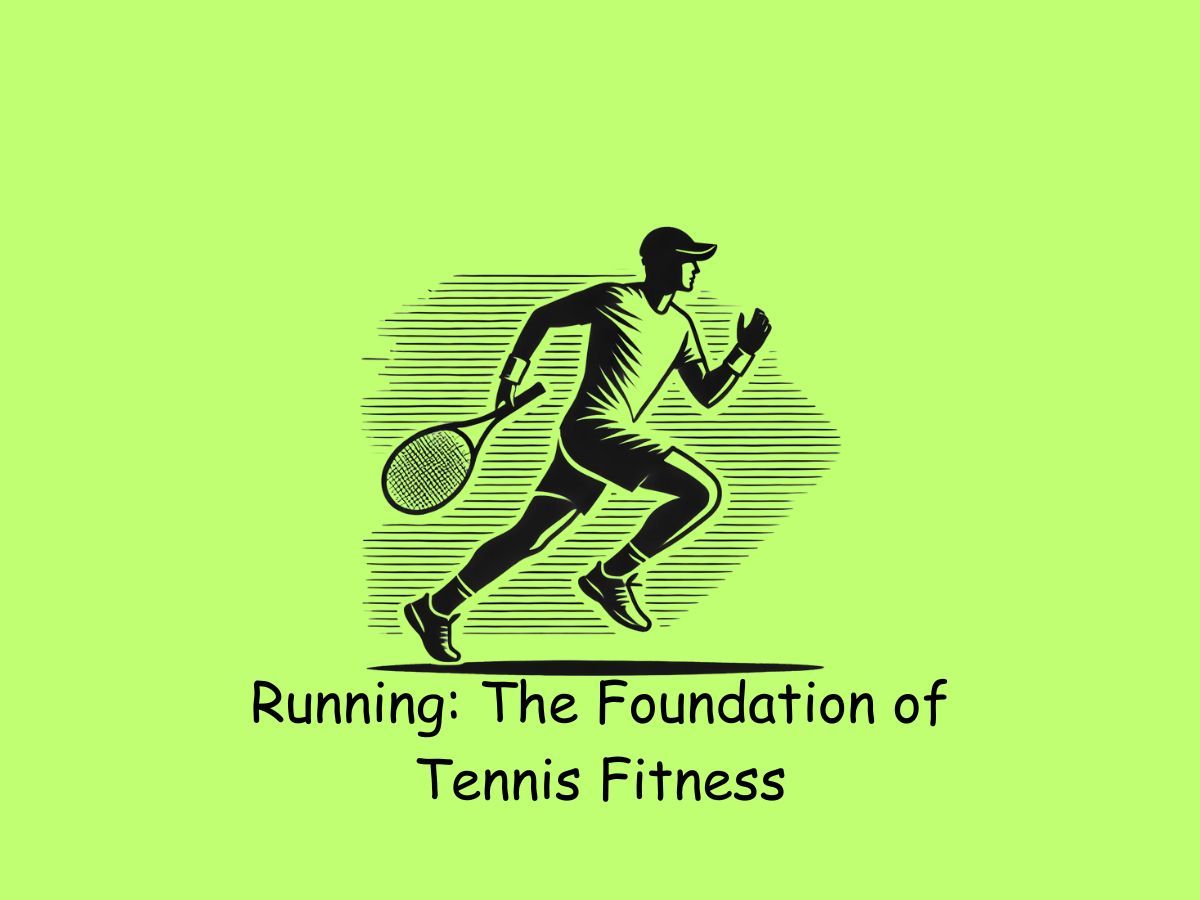
Running is a cornerstone of tennis fitness, providing numerous benefits that directly translate to improved performance on the court. Regular running helps build the endurance needed to compete at a high level. Aim to run 8 to 10 kilometers twice a week to develop a solid foundation of cardiovascular fitness2. This base level of endurance will help you maintain your energy and focus throughout long matches.
However, it’s important to note that tennis-specific fitness requires more than just long-distance running. While sustained, slow-paced runs are beneficial for overall cardiovascular health, they don’t fully replicate the demands of tennis7. Tennis involves a combination of sudden, anaerobic bursts of speed and sustained aerobic movements. Therefore, your running routine should include a mix of different types of runs to best prepare you for the sport.
To make your running more tennis-specific, incorporate interval training and sprints into your routine. These high-intensity exercises better mimic the stop-and-start nature of tennis and help improve your ability to recover quickly between points7. Additionally, include footwork drills in your training to enhance your agility and court movement. By combining various types of running exercises, you’ll develop a well-rounded fitness base that directly supports your tennis game.
Sprinting Intervals: Mimicking On-Court Action
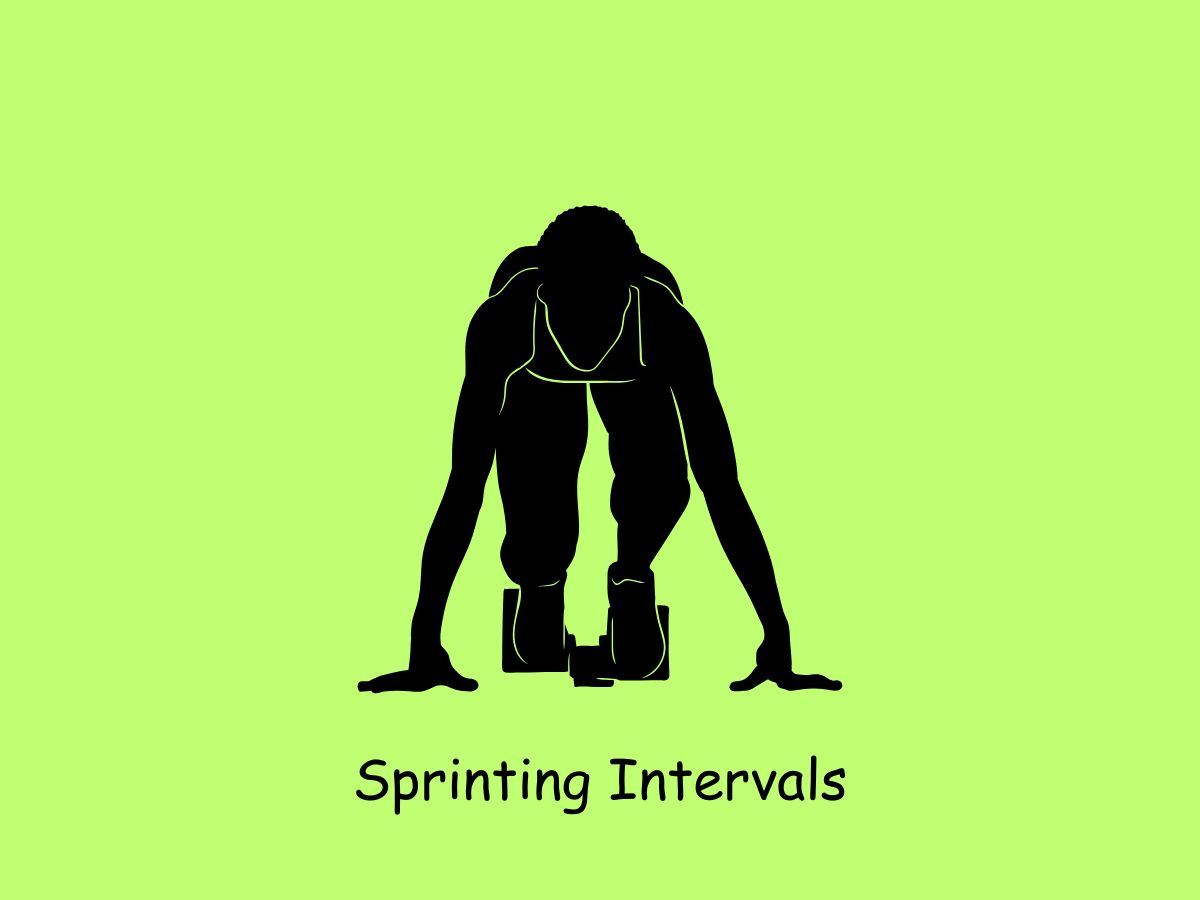
Sprinting intervals are a crucial part of tennis-specific training, as they closely replicate the short, intense bursts of activity you experience during a match. Tennis players typically reach their top speed within 35 meters and maintain it for about 5 to 10 meters3. To train effectively, focus on sprint distances between 10 to 30 meters for acceleration training, and 35 to 45 meters for speed training36.
When designing your sprint workout, aim for total session volumes of 200 to 400 meters, with rest periods of 30 to 90 seconds between sprints3. This high-intensity training improves your ability to explode into action and recover quickly, just like you need to do between points in a tennis match. It’s important to perform these sprints when you’re fresh, so include them at the beginning of your training session6.
To make your sprint training even more tennis-specific, incorporate ladder drills and vary your starting positions. This helps improve your footwork and simulates the unpredictable nature of movement on the tennis court6. Remember, the goal is to train your body to react quickly and move efficiently in short bursts, mirroring the demands of actual tennis play. By consistently including sprint intervals in your training routine, you’ll notice improvements in your on-court speed, agility, and endurance.
Footwork Drills: Agility and Quick Movements
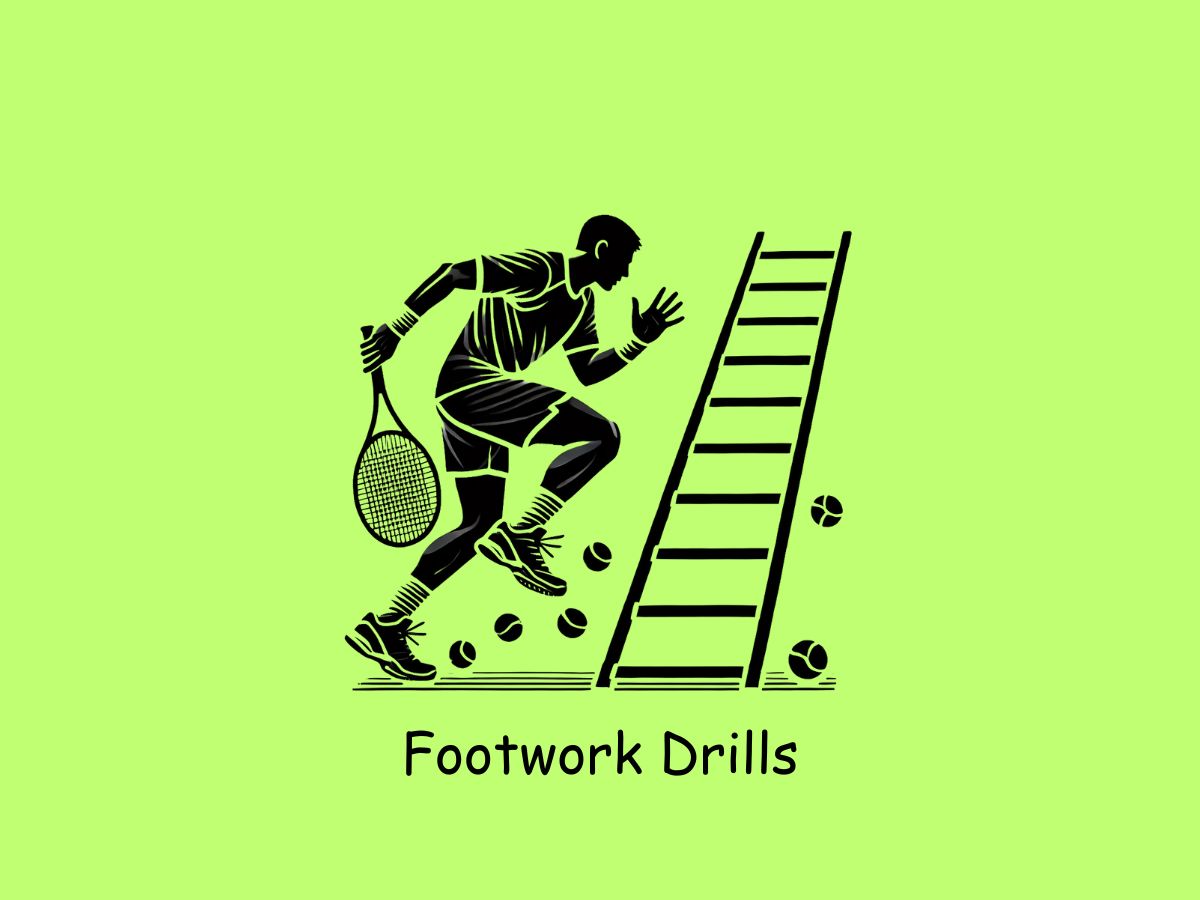
Footwork drills are essential for improving your agility and quick movements on the tennis court. These exercises help you develop the ability to change direction rapidly and maintain balance during intense rallies. One effective drill is the Spider, where you start at the center of the court and sprint to different corners, touching each with your racket before returning to the center1.
Another useful drill is the Lateral Sprint. This exercise involves moving side to side along the baseline, mimicking the lateral movements often required during a match1. The Star Drill is also great for improving multi-directional movement. In this exercise, you move in a star pattern, touching cones placed in different directions around you1.
To make your footwork training more tennis-specific, try the Mirror Drill. This exercise involves facing a partner and mirroring their movements, which helps improve your reaction time and court awareness1. Remember to keep a wide base during these drills and focus on your first two steps, as these are crucial for efficient movement on the court7.
Jump Rope: Boost Your Coordination and Stamina
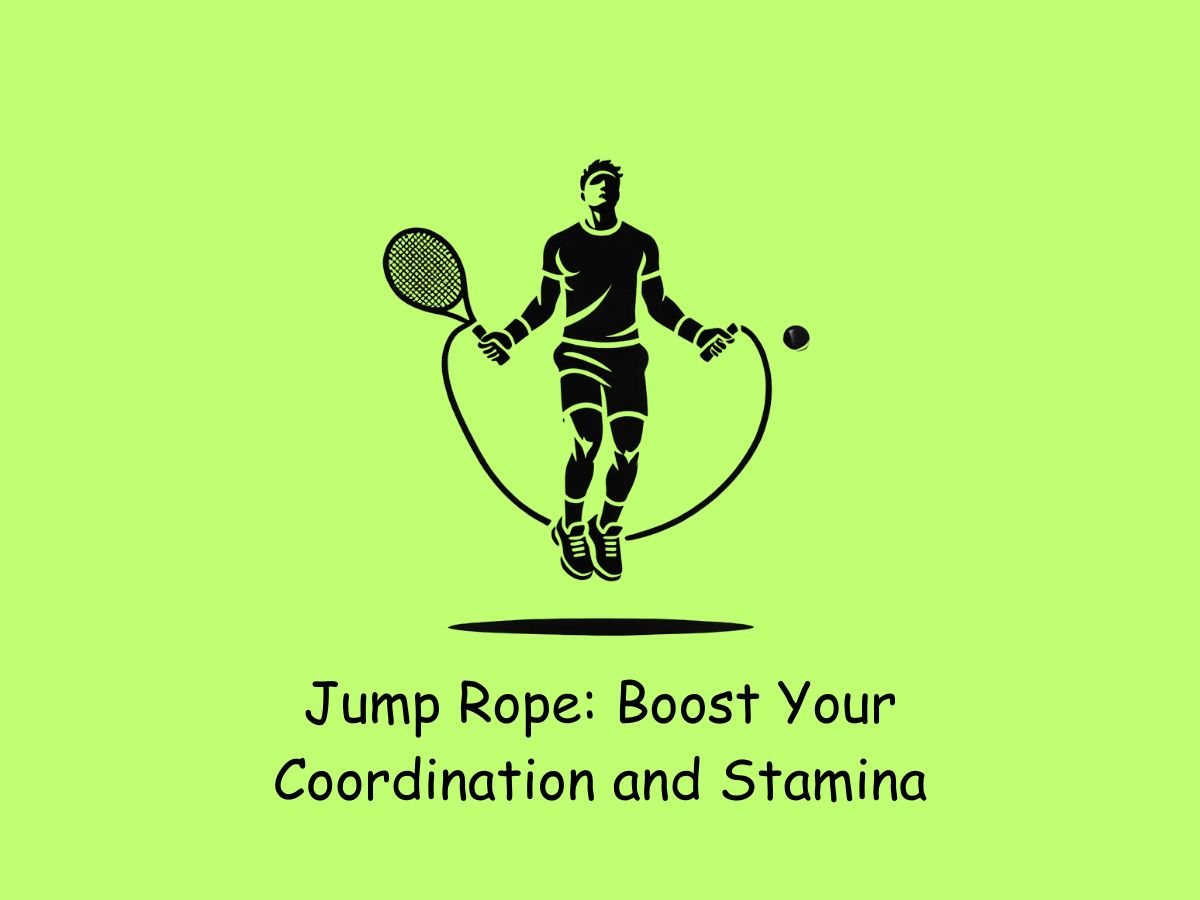
Jump rope is a fantastic exercise for tennis players looking to improve their coordination and stamina. This simple yet effective workout provides a high-intensity cardio session that can significantly boost your on-court performance. Just 30 minutes of jumping rope can burn 200-300 calories, making it an excellent choice for players aiming to get lean and quick5.
One of the key benefits of jump rope for tennis players is its ability to enhance coordination between hands and feet. The rhythmic motion of jumping rope helps develop the hand-eye-foot coordination that’s crucial for positioning, split-stepping, and changing direction on the court5. Additionally, the continuous motion of rope jumping establishes an innate sense of rhythm, keeping you light on your feet – a vital skill for quick reactions and efficient movement during a match5.
Jump rope is also a full-body workout that engages multiple muscle groups simultaneously. This comprehensive exercise strengthens your legs, core, shoulders, and arms, Mimicking the physical conditioning and demands of a tennis match5. Moreover, it’s a lower-impact exercise compared to running, which means it’s easier on your joints and allows for quicker recovery between workouts5. By incorporating jump rope into your training routine, you’ll notice improvements in your endurance, agility, and overall court performance.
Circuit Training: Full-Body Endurance Boost
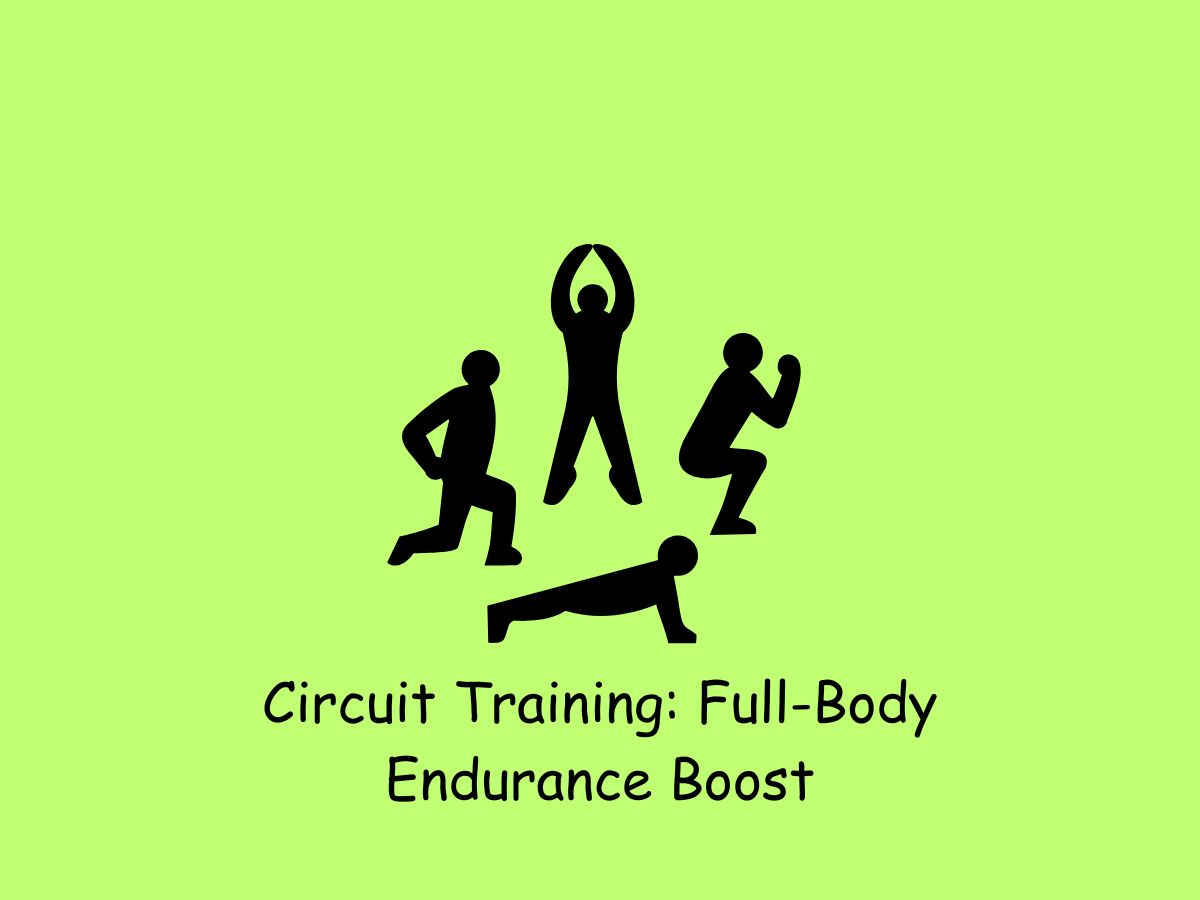
Circuit training is a powerful method to enhance your full-body endurance for tennis. This type of workout involves performing a series of exercises in succession, with brief rest periods in between. It’s particularly beneficial for tennis players as it improves speed, strength, and endurance all at once3.
A typical circuit training session might include 6 to 10 different exercises targeting various muscle groups. For example, you could start with squats, move on to push-ups, then do lunges, followed by medicine ball slams, and finish with burpees9. Each exercise is usually performed for a set time, often 20-30 seconds, with a short rest before moving to the next exercise10.
The beauty of circuit training is its versatility. You can design circuits that focus on specific areas you want to improve, such as leg strength or upper body power. It’s also an efficient way to train, as you can get a comprehensive workout in a relatively short time. This makes it ideal for tennis players with busy schedules who need to maintain their fitness without spending hours in the gym6. Regular circuit training will help you build the stamina needed to perform at your best throughout long, intense matches.
Long-Distance Running: Building Lasting Stamina
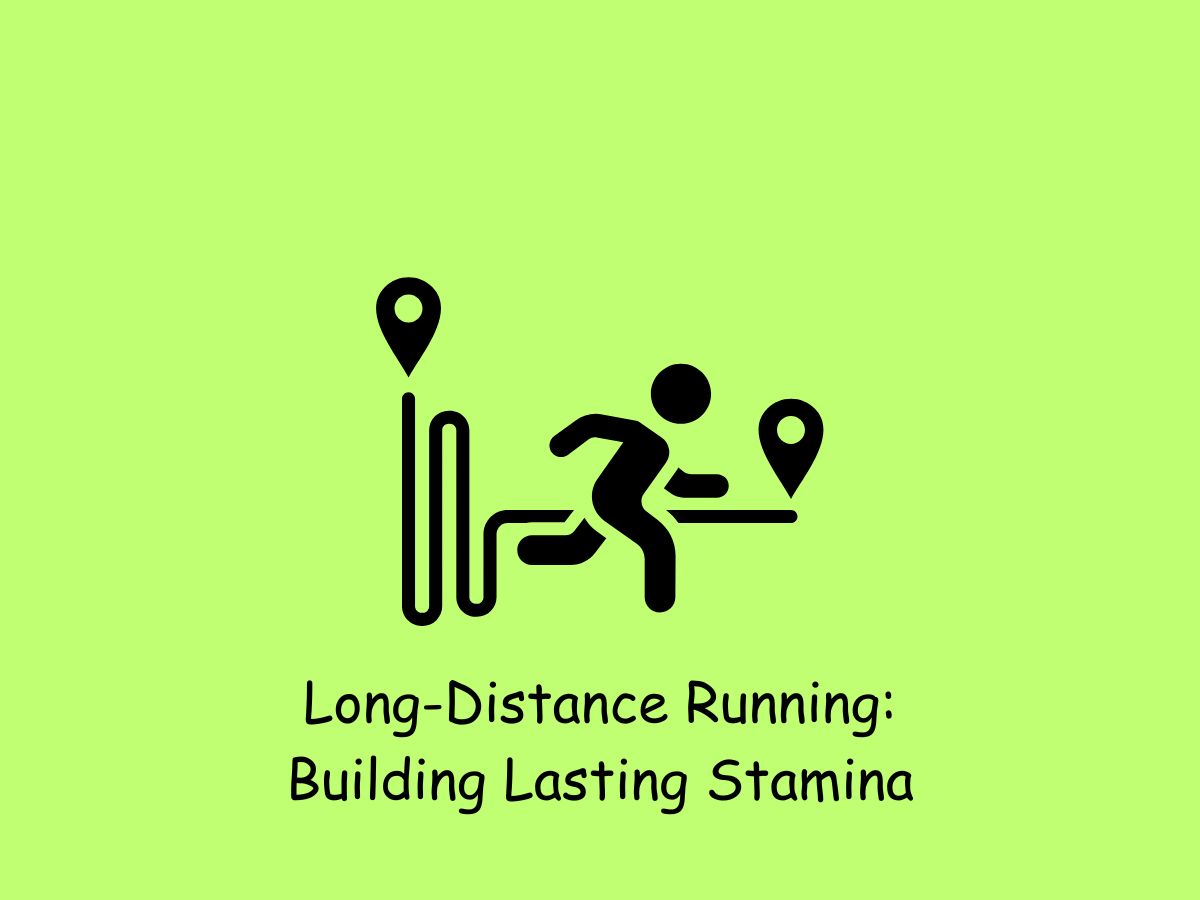
Long-distance running is a key component in building lasting stamina for tennis players. Regular long runs, typically 30 to 40 minutes at a moderate pace, help improve your cardiovascular system and overall endurance1. This type of training strengthens your heart, increases oxygen delivery to muscles, and builds up joint and muscle strength4.
For tennis players aged 13 and above, developing a strong aerobic base through long-distance running is crucial. It helps sustain high-level performance, reduces injury risk, and contributes to long-term success in the sport1. A good starting point is to aim for runs of 3 to 5 miles, gradually increasing distance and duration as your fitness improves9.
While long-distance running is beneficial, it’s important to note that tennis involves a mix of anaerobic bursts and sustained aerobic movements. Therefore, your running routine should be balanced with other types of training to best prepare for the demands of tennis2. Long runs build the foundation of your endurance, allowing you to maintain proper technique and decision-making even when tired during long matches1.
Tennis-Specific Cardio Exercises
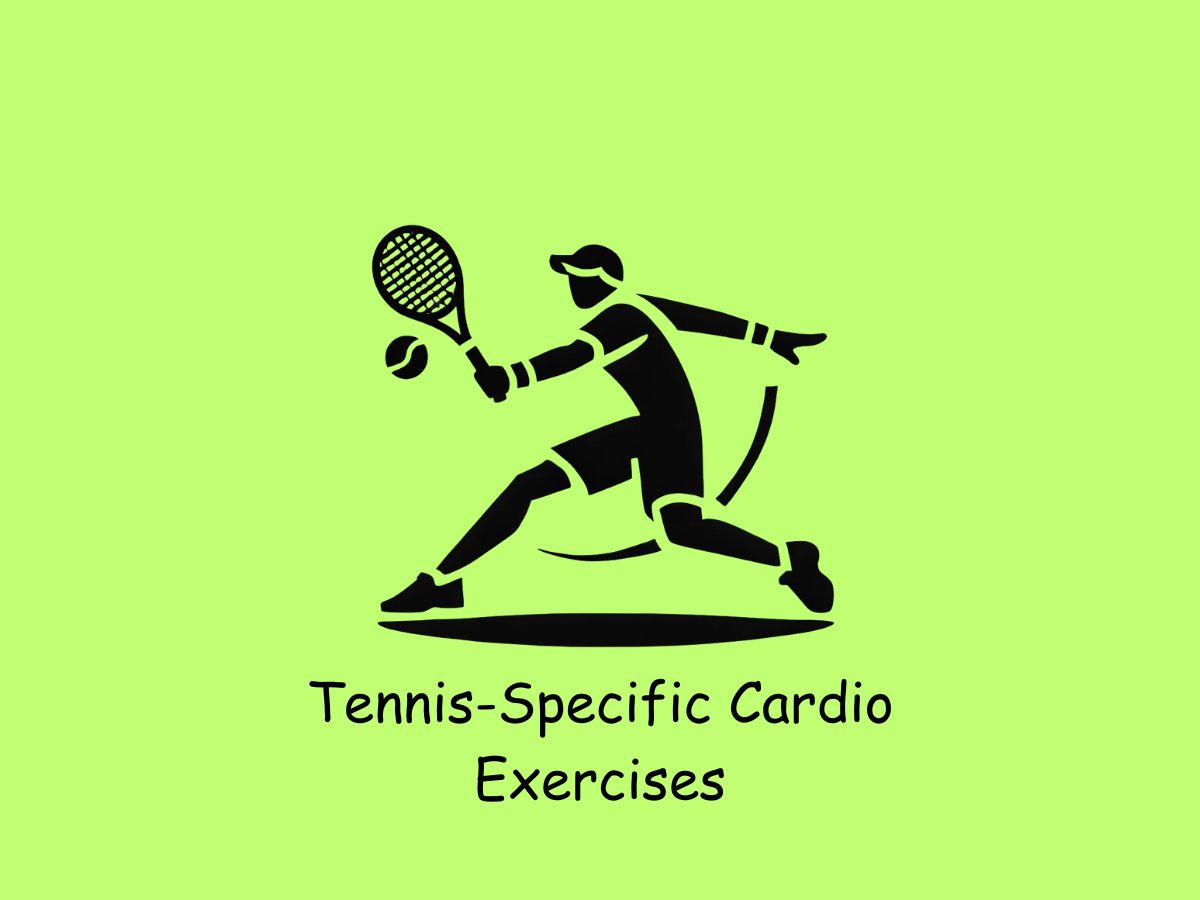
Tennis-specific cardio exercises are designed to mimic the unique demands of the sport. One effective exercise is the suicide run, which involves sprinting to progressively distant points on the court and returning to the starting position. This drill improves speed, endurance, and agility while getting your body accustomed to the quick starts and stops common in tennis2.
Footwork drills are another crucial component of tennis-specific cardio. These exercises involve moving in multiple directions – forward, backward, side-to-side, and diagonally. Using a rope ladder or performing spider drills can help improve your foot speed and ability to change directions quickly2. These skills are essential for efficient movement on the court.
Interval training is highly effective for tennis players. It involves alternating between high-intensity sprints and periods of rest or lower intensity activity. For example, you might do five 15-meter sprints, walking back to the start line between each sprint4. This type of training closely mimics the stop-and-start nature of tennis, improving both your speed and endurance. Remember to maintain intensity throughout the workout for maximum benefit4.
Balancing Cardio with Strength Training
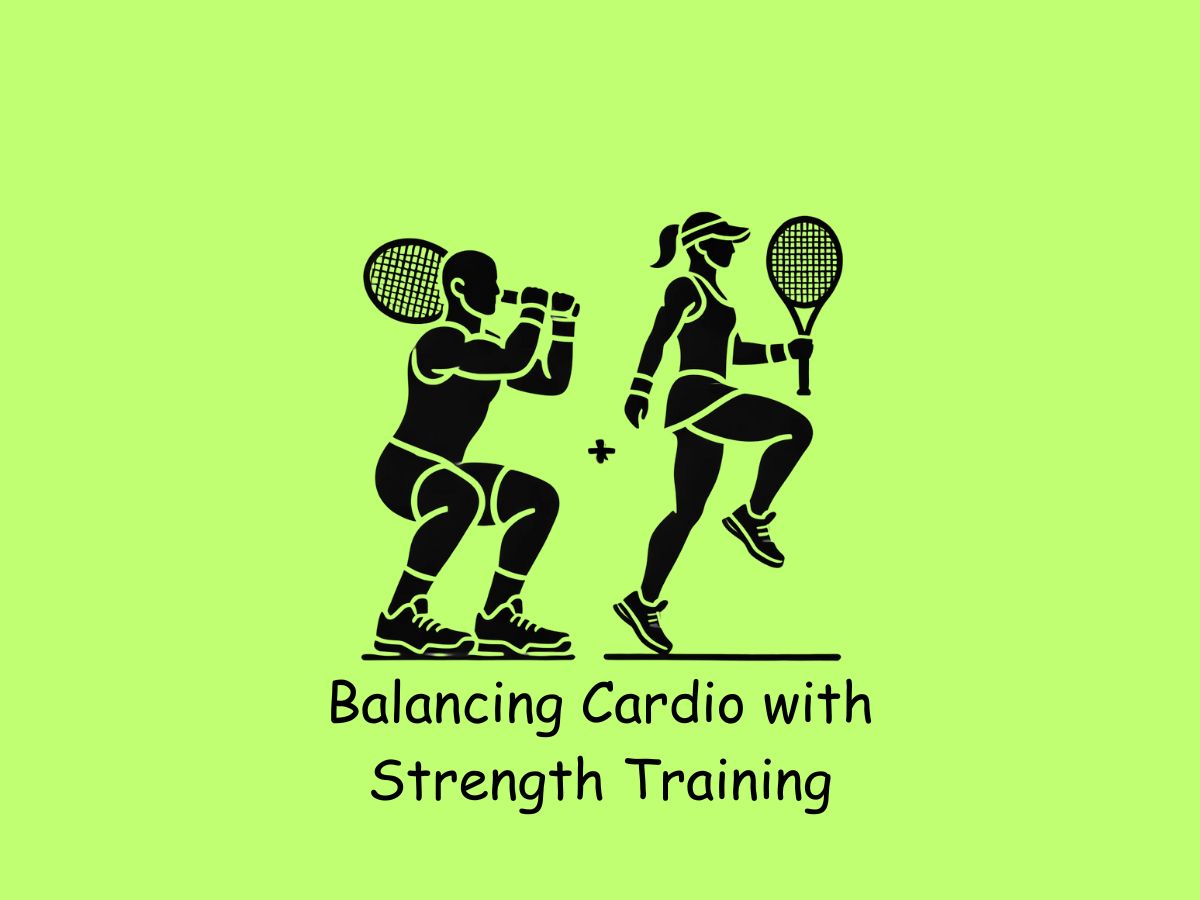
Finding the right balance between cardio and strength training is crucial for tennis players. While cardio builds endurance, strength training helps develop the power needed for explosive movements on the court. A well-rounded fitness routine should include both types of exercise to improve overall performance5.
For strength training, focus on exercises that target the muscles used most in tennis. This includes squats and deadlifts for leg strength, bench presses for upper body power, and core exercises like planks and Russian twists8. Aim for 2-3 strength training sessions per week, using moderate weights with higher repetitions to build strength without adding bulk5.
To effectively balance cardio and strength training, consider incorporating High-Intensity Interval Training (HIIT) into your routine. HIIT workouts combine short bursts of intense exercise with periods of rest, mimicking the energy demands of tennis5. This type of training improves both cardiovascular fitness and muscular endurance. Remember to listen to your body and adjust your training intensity based on your match schedule to avoid overtraining3.
Conclusion
Now it’s your turn to take action and put these cardio strategies to work! Remember, improving your tennis endurance takes time and effort. Try adding these exercises into your regular routine. You’ll soon be playing stronger and longer. Don’t be afraid to experiment and find what works best for you. If you need more information or have any questions, feel free to contact me at jaiden@jaidensmedia.com. I’m always happy to help you improve your tennis game.
FAQs
Why is cardio so important for tennis?
Cardio helps you stay energetic during long matches, improves your heart health, and enhances your agility on the court.
How much running should I do for tennis fitness?
Aim for 8 to 10 kilometers twice a week. Also, include sprints and interval training.
What are sprint intervals, and why are they helpful?
Sprint intervals are short, high-intensity bursts of speed followed by rest. They mimic the action in a tennis match and improve your quickness and recovery.
What kind of footwork drills should I do?
Try the Spider Drill, Lateral Sprint, Star Drill, and Mirror Drill to improve your agility and reaction time.
How can jump rope benefit my tennis game?
Jump rope improves your coordination, stamina, and strengthens your legs and core, all of which help your tennis performance.
What is circuit training, and how can it help?
Circuit training involves doing a series of exercises one after another with short rests. It builds speed, strength, and endurance for tennis.
Is long-distance running necessary for tennis?
Yes, it builds a good base of endurance. Aim for 3 to 5 miles to improve your stamina.
What are some tennis-specific cardio exercises?
Try suicide runs, footwork drills, and interval training to mimic the movements and intensity of a tennis match.
How can I balance cardio with strength training?
Include 2-3 strength training sessions per week focusing on legs, core, and upper body. Also, incorporate HIIT workouts.
How often should I train to see results?
Aim for at least three cardio sessions and two strength training sessions per week. Consistency is key to improving your tennis endurance!
